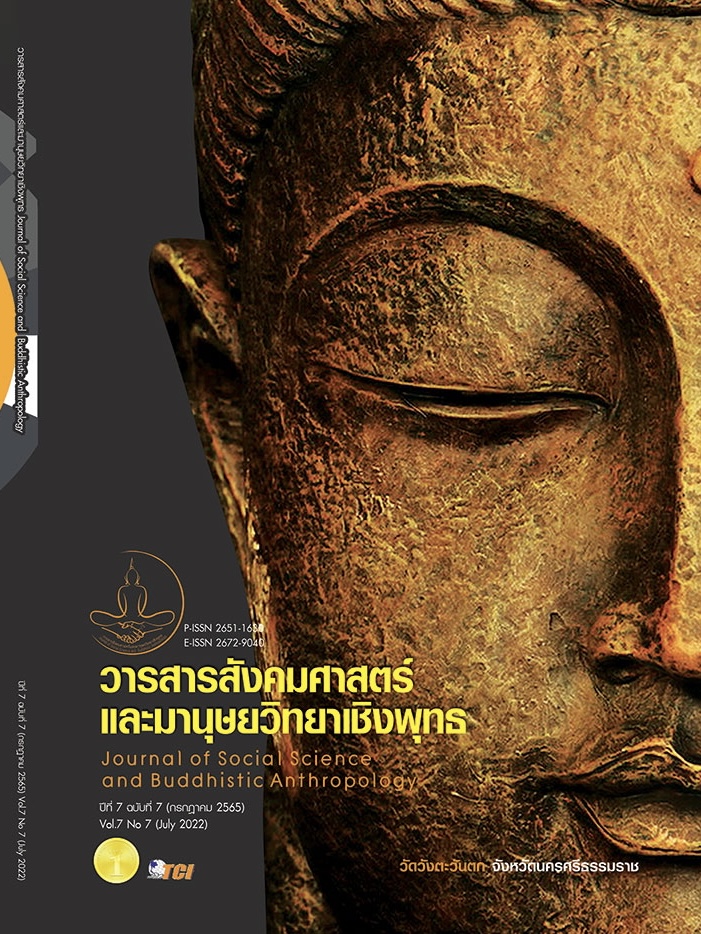A STUDY OF PUBLIC SPACES IN BANGKOK TO DEVELOP AS A DISTRIBUTION AREA FOR COMMUNITY ENTERPRISE PRODUCTS UNDER THE CREATIVE ECONOMY CONCEPT
Keywords:
Public Space, Community Enterprise Products, Night MarketAbstract
The Objectives of this research article were to 1) to observe and 2) to evaluate the quality of public spaces in Bangkok to develop the space into distribution area of community enterprise products under the creative economy concept. The study methods are 1) from documents related to Bangkok’s space, commercial enterprise products, concept, and research on urban and public space management and 2) from field study at district offices, nominated public spaces to be zone and district representatives by district offices, the use of survey and assessment to assort spaces according to theory concept, in-depth interview with related parties to governmental sector’s spaces management, district director and representative from 10 districts, 10 groups of community enterprise operators, workshop with 150 participants residing in Bangkok to raise the issue and solution of community products The result finds that 1) public spaces are under the management of Treasury Department, State Railway of Thailand, Expressway Authority of Thailand, and private owners. The acquisition of public space to sell goods must be in accordance with the rules for using the space. The further development of space to increase income in accordance with creative economy has been evaluated based on the concept of space, commercial enterprise and creative economy. The area in the inner Bangkok has been certified as commercial and investment promotion zone. The result also finds that 2) the quality assessment of public space to develop into community enterprise product distribution area is conducted together with districts through workshop and field observation. The assessment concludes and proposes SWU area to sell community enterprise goods and be called Night Market. The data analysis is done by describing the contents together with the theoretical concept and field data.
References
กองนโยบายและแผนงาน สำนักผังเมือง กรุงเทพมหานคร. (2559). รายงาน : การเปรียบเทียบพื้นที่ว่างเปล่าในเขตกรุงเทพมหานครระหว่างพ.ศ.2549 และ2558. เรียกใช้เมื่อ 30 มีนาคม 2565 จาก https://docs.google.com/gview?embedded=true&url= http://cmc.bangkok.go.th/bmaitev/web/uploads/57.pdf
นิรมล กุลศรีสมบัติ และยุวดี ศิริ. (2552). พื้นที่ทิ้งร้างกับการฟื้นฟูเมือง : กรณีพื้นที่ใต้ทางพิเศษยกระดับในกรุงเทพมหานคร. วารสารวิชาการคณะสถาปัตยกรรมศาสตร์ จุฬาลงกรณ์มหาวิทยาลัย, 58(2), 77-92.
สันติ เศวตวิมล. (2544). ตำนานตลาดไทย. กรุงเทพมหานคร: ประพันธ์สาสน์.
สุดสวาท ดิศโรจน์ เเละคณะ. (2539). รายงานการวิจัยฉบับสมบูรณ์ เรื่อง การศึกษาปรากฏการณ์อาคารสูงในเขตชั้นในและชั้นกลางของกรุงเทพมหานคร. กรุงเทพมหานคร: สำนักผังเมืองกรุงเทพ.
อาคม เติมพิทยาไพสิฐ. (2554). เศรษฐกิจสร้างสรรค์ของไทย. เรียกใช้เมื่อ 20 มิถุนายน 2560 จาก http://www.thaiembassy.org/seoul/contents/files/business-20130905 -090903755759.pdf
Foucault, M. (1967). Space, knowledge, and power, in Paul Rabinow, ed..The Foucault reader. New York: Pantheon Books.
Lynch, K. & Southworth, M. (1990). Wasting Away. San Francisco: Sierra Club Books.
Mumford, L. (1961). The City in History: Its Origin, Its Transformations, and Its Prospects, The Harvest Book. New York: Harcourt Brace & Company.
Perera, L. A. S. R. (1994). Accommodating Informal Sector Enterprises in the Urban Built Environment. Bangkok: Asian Institute of Technology, HSD Monograph no.36.
Transik, R. (1986). Finding Lost Space: Theories of Urban Design. New York: Van Nostrand Reinhold.
Downloads
Published
How to Cite
Issue
Section
License
Copyright (c) 2022 Journal of Social Science and Buddhistic Anthropology

This work is licensed under a Creative Commons Attribution-NonCommercial-NoDerivatives 4.0 International License.








